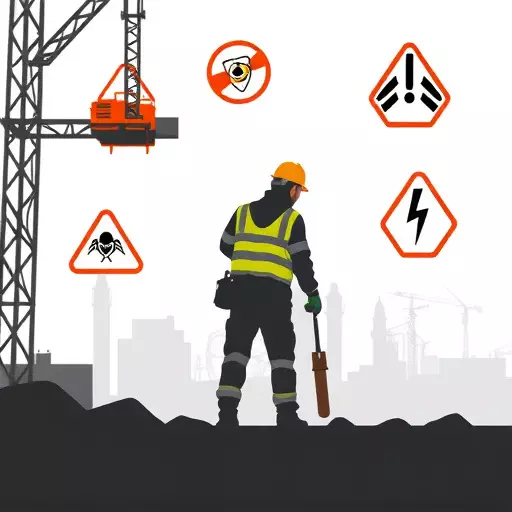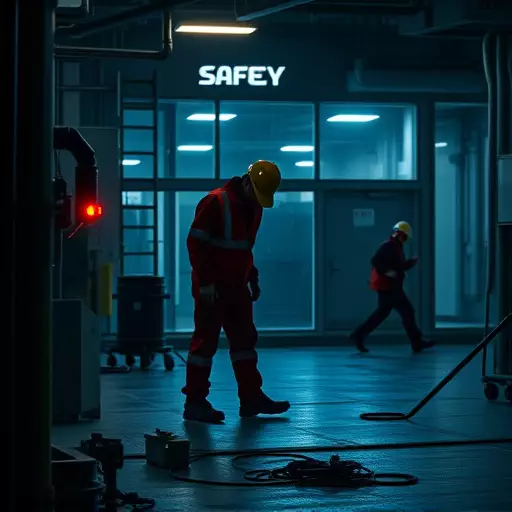In today's dynamic work environment, staying ahead of emerging occupational hazards is paramount. The latest occupational safety news emphasizes a shift towards proactive measures driven by advancements in safety management systems that integrate technology, data analytics, and continuous improvement. Smart sensors, IoT devices, virtual reality (VR), and augmented reality (AR) are being used to predict and mitigate risks in real-time, enhancing training programs and fostering a culture of employee empowerment. Effective leadership is crucial for cultivating this proactive approach, leveraging open communication, regular risk assessments, targeted training, and shared responsibility to create a safer, more productive workplace. Staying informed about the latest safety news and industry trends ensures organizations can anticipate risks, implement best practices, and stay ahead in their safety management systems.
In today’s evolving work environment, leadership plays a pivotal role in ensuring occupational safety. With the constant emergence of new risks and changing industry trends, understanding the latest occupational safety news is crucial for every organization. This article explores various facets of safety management, from identifying emerging hazards and fostering a culture of safety to implementing effective systems and engaging employees. We delve into case studies demonstrating successful leadership strategies and offer insights on future-proofing your workplace against evolving risks, emphasizing the importance of continuous improvement in safety management, including key SEO keywords like latest occupational safety news and emerging occupational hazards.
- Understanding the Evolving Landscape of Occupational Safety: A Look at Latest News and Trends
- Identifying Emerging Hazards: Staying Ahead of the Curve in Workplace Safety
- The Integral Role of Leadership in Building a Culture of Safety
- Implementing Effective Safety Management Systems: Strategies for Comprehensive Coverage
- Communicating Risks and Benefits: Engaging Employees in Safety Initiatives
- Case Studies: Successful Leadership in Mitigating Occupational Hazards
- Future-Proofing Your Workplace: Continuous Improvement in Safety Management
Understanding the Evolving Landscape of Occupational Safety: A Look at Latest News and Trends

In today’s rapidly changing work environment, understanding the evolving landscape of occupational safety is paramount for any organization. The latest occupational safety news and trends reveal a growing emphasis on proactive measures to address emerging occupational hazards. This shift is driven by advancements in safety management systems that integrate technology, data analytics, and continuous improvement methodologies. Companies are no longer solely reactive but are leveraging these tools to predict and mitigate risks before they escalate.
For instance, the adoption of smart sensors and IoT devices allows for real-time monitoring of workplace conditions, enabling immediate action when potential dangers are detected. Additionally, emerging technologies like virtual reality (VR) and augmented reality (AR) are being used to enhance training programs, making them more interactive and effective. These innovations not only improve safety compliance but also foster a culture where every employee is empowered to identify and address hazards proactively, contributing to a safer and more productive work environment.
Identifying Emerging Hazards: Staying Ahead of the Curve in Workplace Safety

In today’s rapidly evolving work environment, staying ahead of emerging occupational hazards is paramount for any organisation committed to maintaining a safe workplace. Effective leadership plays a crucial role in this regard, as leaders are responsible for not only identifying potential risks but also implementing proactive safety management systems. By keeping abreast of the latest occupational safety news and industry trends, forward-thinking leaders can anticipate emerging hazards before they become significant issues.
This involves fostering a culture of continuous improvement where safety is prioritized at all levels. Leaders should encourage open communication among employees, actively seeking feedback on potential risks and promoting a shared responsibility for workplace safety. Regular risk assessments, employee training sessions focused on new or evolving dangers, and the timely adoption of best practices are key strategies to stay ahead of the curve in occupational safety management.
The Integral Role of Leadership in Building a Culture of Safety

Effective leadership plays a pivotal role in establishing and nurturing a culture of safety within any organization, especially in light of the ever-evolving landscape of occupational hazards. In today’s digital era, where the latest occupational safety news highlights emerging risks and threats, proactive leadership is more crucial than ever. Leaders are not merely managers; they are catalysts for change, driving the implementation of robust safety management systems that go beyond compliance.
By leading from the front, managers can foster an environment where every employee takes ownership of their well-being and that of their colleagues. This involves regular training, open communication about emerging occupational hazards, and promoting a mindset where safety is not just a protocol but a shared responsibility. Such leadership inspires trust, encourages reporting of near-misses or unsafe conditions, and facilitates continuous improvement in safety management practices.
Implementing Effective Safety Management Systems: Strategies for Comprehensive Coverage

In today’s dynamic work environment, keeping pace with the latest occupational safety news and emerging occupational hazards is paramount. Effective leadership plays a pivotal role in implementing robust safety management systems that offer comprehensive coverage. By integrating cutting-edge technologies and evidence-based practices, leaders can create a culture of safety where preventive measures are prioritized. This involves regular risk assessments, employee training programs, and the establishment of clear communication channels to address concerns promptly.
Strategic initiatives such as adopting industry-standard safety protocols, conducting mock drills, and fostering an open reporting system contribute to a more secure workplace. Leaders who champion continuous improvement drive regular audits and updates to safety management systems, ensuring they remain relevant and effective against evolving threats. This proactive approach not only minimizes incidents but also boosts employee morale by demonstrating a genuine commitment to their well-being.
Communicating Risks and Benefits: Engaging Employees in Safety Initiatives

In today’s ever-evolving work environment, where emerging occupational hazards continue to surface, effective communication about risks and benefits is a cornerstone of successful safety management systems. Leaders play a pivotal role in this process by clearly articulating potential dangers and their mitigation strategies. This involves regular updates on latest occupational safety news and trends, enabling employees to understand not only the risks but also the proactive steps being taken to ensure their well-being.
By engaging employees in safety initiatives, leaders foster a culture of ownership and accountability. This collaborative approach leverages the collective expertise and insights of the workforce, enhancing the overall effectiveness of safety management systems. It’s about transforming passive recipients into active participants, ensuring that everyone is aligned towards achieving a shared goal: a safer and healthier workplace.
Case Studies: Successful Leadership in Mitigating Occupational Hazards

In the realm of occupational safety, leadership plays a pivotal role in mitigating emerging hazards and ensuring adherence to best practices. Successful case studies from around the globe highlight the impact of strong leadership on creating robust safety management systems. For instance, companies like Apple and Google have set industry benchmarks by integrating safety into their corporate DNA, leading to significantly lower incident rates and improved employee morale. These organizations prioritize open communication, regular training, and a culture of continuous improvement, enabling them to navigate complex and ever-changing occupational safety landscapes.
The latest occupational safety news often underscores the success stories of businesses that foster a leadership environment focused on proactive risk assessment and mitigation. By embracing innovative strategies and staying abreast of emerging hazards, forward-thinking leaders are transforming traditional safety management systems into dynamic, data-driven processes. This approach not only reduces workplace accidents but also fosters a sense of shared responsibility among employees, ultimately contributing to a safer and more productive work environment.
Future-Proofing Your Workplace: Continuous Improvement in Safety Management

In today’s rapidly evolving work environment, future-proofing your workplace goes beyond implementing the latest technologies; it encompasses a holistic approach to safety management. As new risks and emerging occupational hazards continue to surface, organizations must embrace continuous improvement strategies to stay ahead of the curve. Staying informed about the latest occupational safety news is crucial, as industry trends and best practices can offer valuable insights for proactive risk mitigation.
This involves regularly reviewing and updating safety management systems to reflect changes in work processes, technologies, and regulatory requirements. By fostering a culture of continuous improvement, leaders can ensure that their organizations remain agile and responsive to the ever-changing landscape of workplace safety, ultimately enhancing employee well-being and fostering a more resilient and adaptable work environment.


